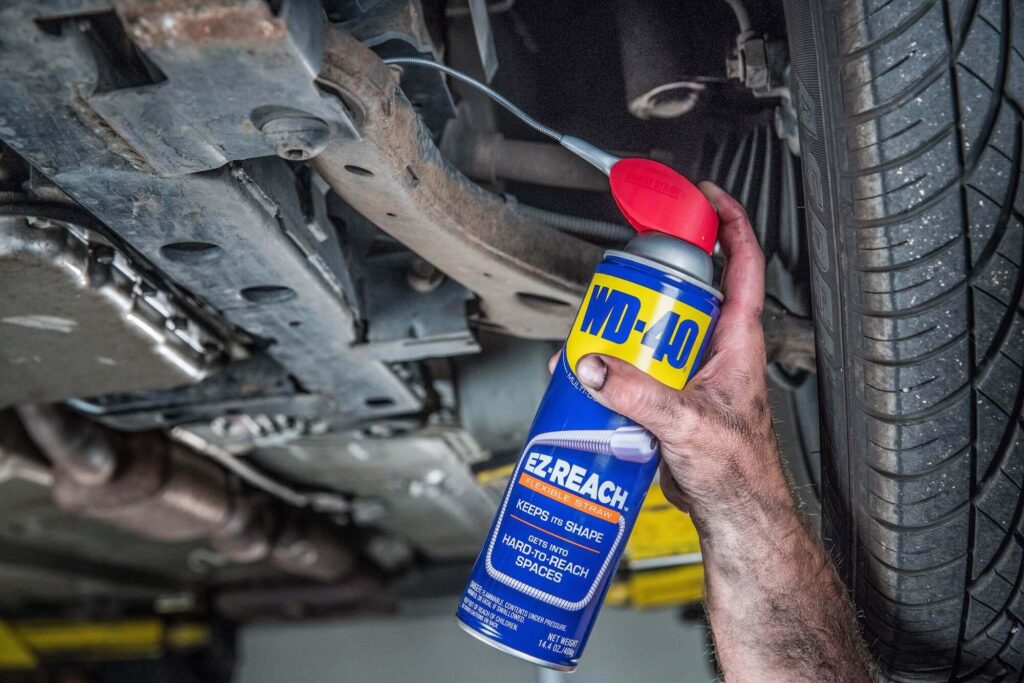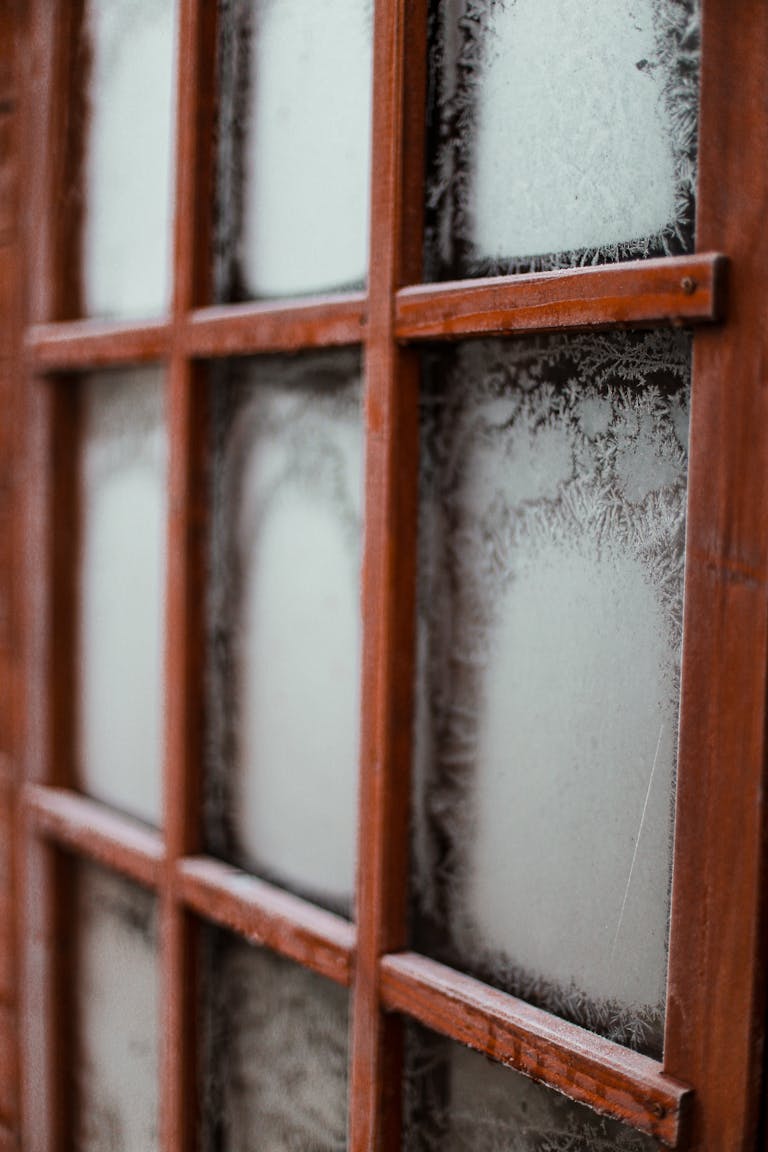WD-40: A Versatile
Multi-Use Product for Home, Auto, and Industry
The iconic blue-and-yellow can with a red cap is recognized worldwide. Introduced as a water-displacing spray, WD-40 has become a household name. Used for lubrication, rust prevention, and cleaning tasks. It’s found in about 80% of American households , thanks to its reputation as a flexible “jack of all trades” solution for fixes around the home and workshop .

The start of WD-40 and how it became the go to for millions
WD-40 stands for “Water Displacement, 40th formula,” reflecting the successful formula perfected on the 40th attempt in 1953 . It was originally developed by Norm Larsen at the Rocket Chemical Company to prevent rust on aerospace components; the first commercial use was protecting the Atlas missile’s outer skin from corrosion .
- MULTI-USE AEROSOL SPRAY: With a traditional spray nozzle, this unique lubricant comes in an industrial 16 oz. size. Offe…
- ONE FORMULA. FIVE FUNCTIONS: WD-40 Multi-Use Product offers one formula with five functions. It lubricates, penetrates, …
- THOUSANDS OF WAYS TO LUBRICATE: This lubricating spray can be used on alloy wheels, engines, hedge trimmers, hinges, bik…
By 1961 it became available to the public, and the formula has remained essentially unchanged. Today, the WD-40 Company markets this multi-use maintenance spray globally as an all-purpose tool for tackling squeaks, rust, and stuck parts .
WD-40 is a penetrating oil and moisture-displacing spray that lubricates, protects, and cleans. Invented in the 1950s for the aerospace industry, it quickly found its way into garages and toolboxes everywhere. The product’s ability to stop squeaks, loosen rusted parts, displace water, and prevent corrosion made it indispensable for both professionals and DIYers .
Over the decades, WD-40 has become a cultural icon – a go-to solution for countless small problems. In fact, enthusiasts have reported over 2,000 uses for WD-40 to the company, highlighting its remarkable versatility . The following sections explore how WD-40 is applied in various fields, from everyday home fixes to automotive maintenance and industrial settings.
Home Improvement & Household Uses
Around the house, a can of WD-40 can be a handy fix-it tool for all sorts of minor issues. Its ability to lubricate moving parts, dissolve adhesives, and protect metal makes it useful in everyday home maintenance. Here are some practical household uses for WD-40:
Stop squeaks on hinges and sliders: A quick spray on door hinges, window tracks, or drawer rollers silences squeaks and eases movement . Sticky sliding doors or stiff locks can often be freed up by WD-40’s lubricating oils.
Remove sticky labels and residue: WD-40 dissolves adhesives, making it easy to peel off old stickers or tape residue. For example, spray it on a price tag or duct tape residue, let it soak a moment, and then wipe away the goo . It saves time when removing labels from jars or decals from glass.
Clean crayon marks: If kids redecorate the walls with crayon, WD-40 can help. A light spray on the crayon marks will loosen the wax for easy wiping. (Crayola’s official stain-removal tips even recommend WD-40 to get crayon off surfaces .) Be sure to clean the area with soapy water afterward, especially on painted walls, to remove any oily film.
Loosen chewing gum: Chewing gum stuck in carpet, on shoe soles, or even in hair can be removed with WD-40. Spray a bit on the gum to break down its stickiness, then gently pull the gum away and clean the remainder . It’s a lot less messy than using peanut butter for gum in hair, and it works on dried candle wax spills as well.
Prevent rust on tools: After doing yard work or home repairs, wipe down metal tools and hardware with WD-40 to fend off rust. A thin coat on garden shears,lawnmower blades, or pipe wrenches will displace moisture and protect them from corrosion . This extends the life of your tools, especially in humid or wet conditions.
For general home improvement hacks, WD-40 is like a shortcut in a can. It can lubricate stubborn curtain rods, unstick a sliding glass door, and even keep bathroom mirrors from fogging (just buff it on the mirror and wipe off the excess). Always use it sparingly – a little goes a long way – and wipe off any excess to avoid slippery surfaces or dust buildup.
Automotive Uses
A mechanic sprays WD-40 on a car part to loosen and protect it during maintenance. In automotive maintenance, WD-40 is valued for its ability to penetrate stuck parts, protect metal surfaces, and drive out moisture. Mechanics and car enthusiasts often reach for WD-40 as a quick remedy or preventive measure in the garage. Here are some ways WD-40 can assist with car care:

Penetrate and free rusted parts: WD-40 works as a penetrating oil to loosen corroded nuts, bolts, and other frozen fasteners. Soaking a rusty bolt or lug nut with WD-40 helps it break free more easily, saving you from rounding it off or snapping it . This trick is useful when working on older vehicles with seized hardware.
Drive out moisture from a wet engine: If your car’s engine won’t start due to moisture (for instance, after going through a deep puddle or a wash), WD-40 can help displace water from the ignition system. Spraying the WD-40 formula into a wet distributor cap or carburetor can evaporate moisture and allow the engine to fire up again . (Always ensure the engine is off before spraying, and use only a small amount.)
Protect and shine chrome: For chrome bumpers, wheel rims, and trim, a light coat of WD-40 helps prevent rust and keeps them shiny. Spray it on the chrome surface, let it sit for a few minutes, then wipe it down – it will remove light rust and grime and leave a protective barrier . This can preserve your car’s chrome details, especially through winter road salt or humid climates.
Lubricate hinges and latches: Eliminating automotive squeaks is another WD-40 forte. A burst of WD-40 into creaky door hinges or hood and trunk latches will quiet them and restore smooth motion . It can also be targeted at suspension squeaks (like strut mounts) or pedal linkage – a temporary fix to stop noises until proper maintenance can be done.
Remove grime, tar, and bugs: Stubborn road tar, tree sap, or squashed insect splatters on your car’s paint? WD-40 can loosen these contaminants so they wipe off easily. Spray the affected area and gently wipe with a soft cloth – the gunk comes off without scratching, and it won’t harm your vehicle’s paint in the process . Many drivers also use WD-40 to clean lovebugs or bird droppings off the grille and windshield for a quick clean-up.
When using WD-40 on your car, remember it’s a quick fix, not a permanent solution. For example, it can stop a door hinge from squeaking now, but you’ll want to apply grease for long-term lubrication. Similarly, while it can dry out a wet ignition, you should address the underlying cause of the moisture. Always keep WD-40 away from brake rotors, drive belts, and other areas where oil should not be, and wipe off excess overspray to prevent attracting dirt.
DIY & Creative Hacks
Beyond the obvious uses, people have come up with creative hacks for WD-40 in DIY projects, crafts, and odd situations. Thanks to its unique mix of lubricant and solvent properties, WD-40 finds its way into some unexpected fixes:
Untangle fine jewelry chains: Dealing with a knotted necklace or tiny tangled chains can be frustrating. A tiny drop of WD-40 on the knot will lubricate the metal links, making it easier to tease apart the tangle . After the chain is free, clean it with mild soap and water. (Bonus: WD-40 can also polish up gold jewelry, restoring some shine.)
Soften stiff leather: Breaking in a new baseball glove or leather work boots? Rubbing a small amount of WD-40 into the stiff leather can help soften and loosen the material . This trick helps the leather fibers relax, making the item more comfortable to use.
Keep snow from sticking to tools: In winter, spray your snow shovel blade with WD-40 before shoveling, and snow will slide right off . This means less heavy lifting since wet snow won’t clump and cling.
Revive paintbrushes and remove paint: If you’ve forgotten to clean a paintbrush and the paint has hardened, WD-40 can help rescue it. WD-40 also removes splatters of road paint or graffiti from surfaces – it’s sometimes used to get stray paint off car finishes or floors (test in a small area first).
Repel insects and pests: Surprisingly, WD-40 can act as a mild insect repellent in a pinch. Spraying door frames, window sills, and screens with a light coat may discourage spiders and other crawling insects from entering (they seem to dislike the oily surface) ..
These offbeat uses illustrate the ingenuity of WD-40 fans. From using it as a makeshift release agent in craft molds to quieting a squeaky fan, the possibilities seem endless. Always use common sense: when trying a creative WD-40 hack, ensure it won’t damage the material (test a small area) and follow up with cleaning if needed. And avoid using WD-40 on anything that will contact food or skin directly, since it’s a petroleum-based product.
Industrial & Professional Applications
In industrial settings and skilled trades, WD-40 is a staple for quick maintenance tasks and troubleshooting. Mechanics, electricians, plumbers, and other tradespeople keep WD-40 on hand because it’s a fast solution to common problems on the job.
WD-40 is also used in industrial cleaning – it helps dissolve grease and grime on equipment. For example, mechanics might spray it on engine parts to cut through oily residue before wiping parts clean.Therefore, Facilities often maintenance personnel use WD-40 to prevent corrosion on hinges, chains, and metal doors exposed to the elements.
Common Myths and Misuses
Over the years, a few myths and misconceptions have sprung up about WD-40. It’s important to separate fact from fiction and use the product correctly. Here are some common myths and mistakes to avoid:
Myth: “WD-40 contains fish oil.” Despite urban legends, WD-40 does not contain fish oil. This myth likely started because some anglers noticed WD-40 could attract fish to lures, assuming there was fish oil in it – but that’s not true . WD-40’s ingredients are petroleum-based (e.g. mineral spirits and light oils), not derived from fish. The company even cautions anglers not to use WD-40 as a fish attractant for environmental reasons, though it can protect fishing gear from rust.
Myth: “WD-40 cures arthritis.” A tabloid claim that pops up periodically is that WD-40 can be sprayed on stiff joints to relieve arthritis pain. This is completely false – WD-40 has no medicinal properties and is not designed for bodily use . In fact, it contains petroleum distillates that could irritate skin. The WD-40 Company explicitly warns that it should never be used for medical purposes. Stick to actual medical treatments for arthritis, and save WD-40 for your door hinges.
Common misuses and what to use Instead
While WD-40 is a versatile product, it’s often misused in ways that can cause more harm than good. Here are some common WD-40 mistakes and better alternatives:
Lubricating Bike Chains
Why It’s Wrong: WD-40 is a water-displacing solvent, not a long-term lubricant. It can clean a chain but won’t provide lasting lubrication.
Better Alternative: Use a proper bike chain lubricant designed for wet or dry conditions.
- Make sure your bike is operating at its best at all times with the proven professional-grade performance of WD-40 Specia…
- Superior long-lasting lubrication: Prevents friction damage and extends chain life without causing residue build-up insi…
- High-performance lubrication for any riding condition – wet or dry, windy or not!
Fixing Door Locks
Why It’s Wrong: WD-40 can temporarily stop a sticky lock, but it attracts dust and dirt, leading to long-term buildup.
Better Alternative: Use a graphite-based lock lubricant or silicone spray for smoother operation.
Using on Rubber Parts
Why It’s Wrong: WD-40 can cause rubber to break down over time, making it brittle.
Better Alternative: Use a silicone-based lubricant to protect and condition rubber seals and gaskets.
Cleaning Electronics & Keyboards
Why It’s Wrong: WD-40 leaves an oily residue that can attract dust and cause damage to sensitive electronics.
Better Alternative: Use isopropyl alcohol or compressed air for safe electronic cleaning.
Polishing Wood Furniture
Why It’s Wrong: While it can make furniture shine temporarily, WD-40 can create a sticky residue that attracts dirt.
Better Alternative: Use a proper wood polish or beeswax for long-lasting shine and protection.
WD-40 is an excellent product when used correctly, but it’s not a fix-all solution. Knowing when not to use it can help prevent damage and keep your items in top condition.
By understanding what WD-40 is and isn’t meant for, you can avoid these pitfalls. Remember that WD-40’s own label and website provide guidance on proper usage – it’s always a good idea to read those recommendations (for example, the Safety Data Sheet notes surfaces to avoid and safety precautions).
More WD-40 Hacks & Expert Tips
If you’re looking for even more ways to use WD-40, check out these reputable articles packed with expert tips and creative solutions:
1. 34 Brilliant WD-40 Hacks You Can Use Around the House – The Family Handyman shares unique ways to use WD-40 for home maintenance, cleaning, and problem-solving.
2. 20 Surprising WD-40 Hacks for Every Home – Housely explores unexpected WD-40 applications that can make household tasks easier.
3. 18 Genius WD-40 Uses You Haven’t Tried Yet—But Should – Bob Vila details innovative WD-40 uses for repairs, DIY projects, and home care.
4. 22 Surprisingly Genius Uses for WD-40 That You’ll Wish You Knew Sooner – The Lighter Side of Real Estate highlights clever and practical ways to use WD-40 in everyday life.
Original Video Link – https://vimeo.com/141164904














